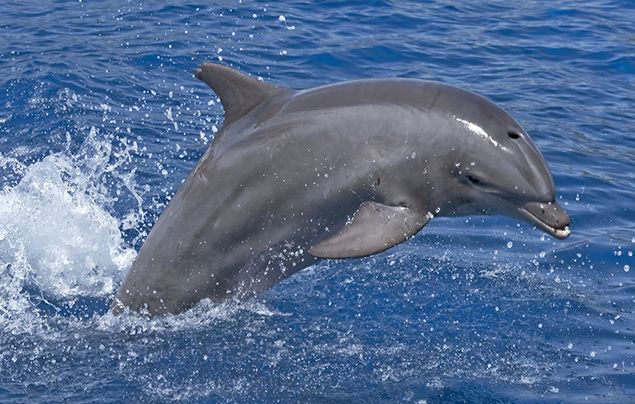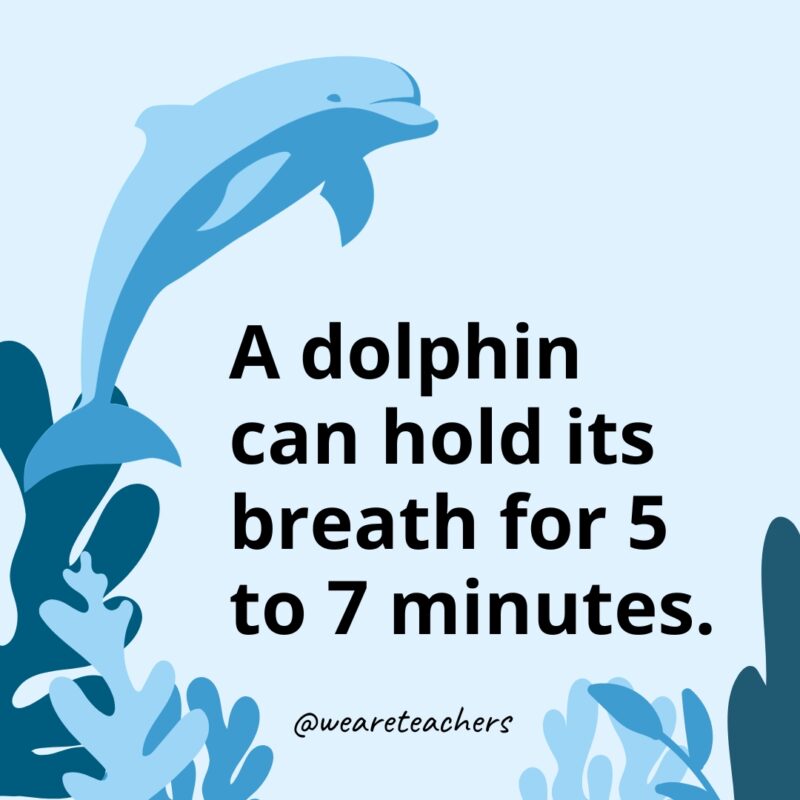Dolphin Facts You Didn't Find Out About Their Adaptations for Survival
Dolphin Facts You Didn't Find Out About Their Adaptations for Survival
Blog Article
Study the Sea: Exciting Dolphin Realities for Ocean Lovers
The globe of dolphins offers a remarkable junction of knowledge, social habits, and ecological significance. With approximately 37 species, these aquatic creatures exhibit a range of impressive features that not just captivate ocean fanatics but additionally emphasize their important role in marine ecosystems. From their complex interaction methods to their impressive analytic abilities, dolphins challenge our understanding of pet knowledge. The pressing demand for conservation efforts to shield these animals and their habitats increases crucial inquiries regarding our duty in the direction of the sea's inhabitants. What ramifications do these elements hold for our communications with these remarkable beings?
Dolphin Species Variety
Variety is a hallmark of the dolphin household, encompassing a broad array of species that display distinctive physical qualities, habits, and environments. The family Delphinidae, frequently called oceanic dolphins, consists of approximately 37 types, each adapted to certain eco-friendly niches. For example, the bottlenose dolphin (Tursiops truncatus) is renowned for its intelligence and flexibility, growing in both open and coastal ocean settings.
In contrast, the orca (Orcinus orca), commonly described as the killer whale, is the biggest participant of the dolphin family members and is characterized by its striking black-and-white coloration. Orcas demonstrate complex social structures and hunting methods, showcasing the behavior variety within the family members. Various other varieties, such as the rewriter dolphin (Stenella longirostris), are kept in mind for their acrobatic displays and preference for warmer waters, highlighting the adaptability of dolphins to various marine ecosystems.
Additionally, river dolphins, including the pink river dolphin (Inia geoffrensis), occupy freshwater environments, even more showing the varied environments that dolphins occupy. Dolphin Facts. This extraordinary diversity not just enhances marine ecological communities but additionally stresses the relevance of conservation efforts to safeguard these exceptional animals and their atmospheres
Social Behavior and Communication
The detailed social habits and interaction techniques of dolphins are important components of their presence, promoting group communication and boosting survival. These extremely intelligent marine animals exhibit complex social frameworks, commonly developing cases that can range from a couple of individuals to over a hundred. Within these teams, dolphins take part in behaviors such as participating searching, social play, and mutual defense, which cultivate strong bonds amongst members.
Dolphins make use of an advanced array of articulations, including clicks, whistles, and body language, to share info and express feelings. Their signature whistles offer as special identifiers, akin to names, making it possible for individuals to call out to each other. This vocal interaction is complemented by non-verbal signals, such as jumping, slapping the water, and synchronized swimming, which additionally enhances their interactions.

Distinct Feeding Habits
Unique feeding behaviors identify dolphins, showcasing their adaptability and intelligence in various aquatic settings. These marine mammals are recognized for their diverse diets, which largely include fish, squid, and crustaceans. Their searching techniques can vary dramatically, commonly tailored to the details victim and environmental problems.
One noteworthy method is participating hunting, where dolphins operate in groups to herd schools of fish right into limited developments, making it easier for people to capture their dish. This social actions not just improves their feeding efficiency yet additionally enhances social bonds within the sheath. Additionally, dolphins visit this page have actually been observed utilizing a technique called "fish-whacking," where they utilize their tails to confuse or stun fish, facilitating easier capture.
One more remarkable feeding routine is echolocation, which permits dolphins to find target even in dirty waters. By discharging sound waves and analyzing the returning echoes, they can recognize the size, shape, and location of their targets. This exceptional capacity underscores their versatility in various environments, from superficial coastal areas to deeper nautical waters. On the whole, the distinct feeding routines of dolphins highlight their function as experienced predators within the marine environment, demonstrating both knowledge and ingenuity.
Knowledge and Trouble Solving
Dolphins exemplify remarkable cognitive capacities that expand past their sophisticated feeding strategies. Their intelligence is apparent in their analytical skills, social interactions, and capacity for knowing. Research study has demonstrated that dolphins can utilize devices, such as making use of aquatic sponges to secure their rostrums while foraging on the seafloor. This actions highlights their capability to control their atmosphere efficiently and adapt strategies to enhance survival.
Additionally, dolphins display advanced interaction abilities, utilizing a complicated system of clicks, whistles, and body language. Dolphin Facts. This communication is crucial for coordinating team tasks, such as hunting and socializing, highlighting their ability to function collectively in the direction of a common goal. Their capability to comprehend abstract concepts, consisting of self-recognition in mirrors, even more highlights their cognitive sophistication
In controlled research studies, dolphins have shown an ability to resolve puzzles and execute tasks that call for both memory and important thinking. These communications suggest not just intelligence yet likewise a readiness to involve with their environment in unique ways. Generally, the cognitive prowess of dolphins positions them among one of the most intelligent types in the world, promoting a deeper recognition for their role in marine ecosystems.
Conservation and Environmental Effect
Preservation initiatives targeted at securing aquatic communities are critical for protecting dolphin populations and their environments. Dolphins are highly delicate to environmental adjustments, and their survival is intricately linked to the wellness of oceanic environments. Overfishing, air pollution, and climate adjustment posture significant dangers to both dolphins and their settings.
Overfishing interrupts the food cycle, bring about a decline in prey varieties essential for dolphin survival. Additionally, pollutants such as plastics and chemicals collect in marine environments, endangering dolphins with consumption and bioaccumulation. Increased water temperatures and ocean acidification, repercussions of climate change, further jeopardize the fragile balance of marine communities, impacting dolphin breeding and migratory patterns.
By focusing best site on conservation initiatives, we can make sure that future generations enjoy the elegance and vigor of dolphins and the seas they inhabit. Protecting aquatic environments is not just concerning conserving dolphins; it is regarding maintaining the complex web of life that maintains us all.
Final Thought
Dolphins exhibit the intricacy and richness of marine life through their diverse types, elaborate social frameworks, and progressed cognitive capacities. click here for more info As vital components of marine communities, dolphins highlight the need of recurring preservation initiatives to safeguard their habitats.
Other species, such as the spinner dolphin (Stenella longirostris), are noted for their acrobatic screens and choice for warmer waters, highlighting the flexibility of dolphins to various aquatic ecological communities.
On the whole, the unique feeding routines of dolphins highlight their duty as experienced predators within the marine community, showing both knowledge and ingenuity.
Generally, the cognitive expertise of dolphins puts them among the most smart types on the world, promoting a much deeper appreciation for their role in aquatic ecological communities.

Report this page